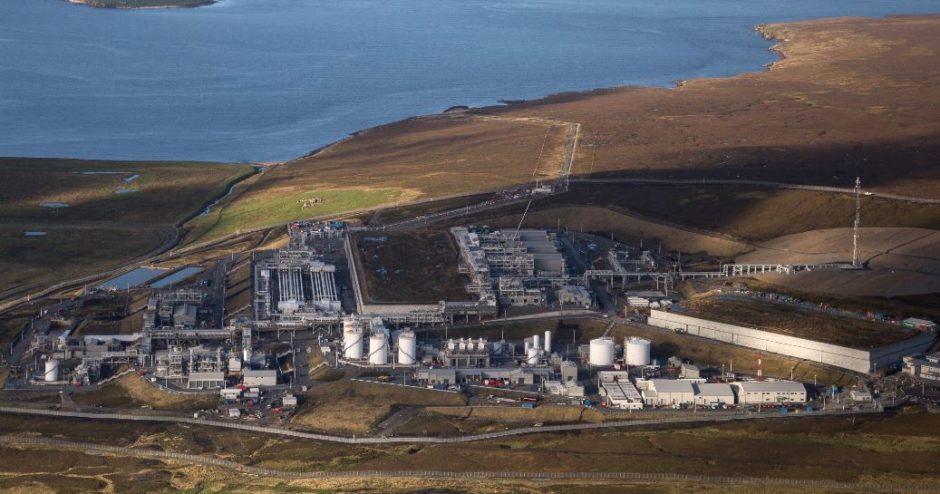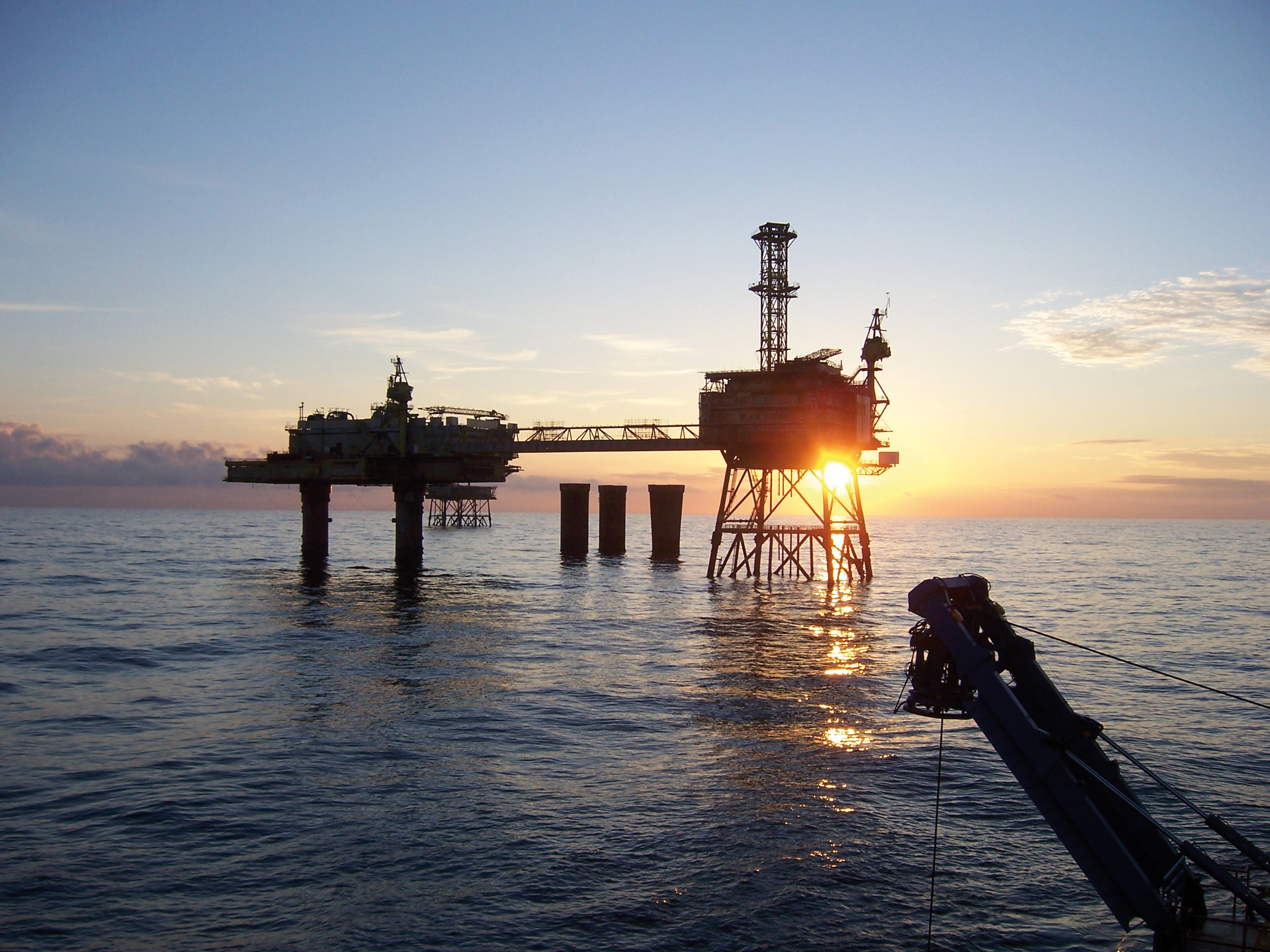
The head of the Scottish Carbon Capture and Storage (SCCS) research partnership has estimated Shetland could still be “20-30 years” from a CCS project as other locations are prioritised.
In June, the Oil and Gas Technology Centre (OGTC) and Shetland Islands Council unveiled plans for an “Energy Hub” on the islands – this will cover developments across a host of projects, including CCS, to cut North Sea emissions.
East of Shetland CCS projects “could significantly reduce emissions with ca. 8Mt CO2 abated by 2050 which is 50% of current emissions of the whole of the UKCS offshore oil and gas industry”, the council and the OGTC said in a statement, announcing the project.
According to Oil and Gas UK (OGUK), in 2018, total CO2 equivalent emissions from offshore oil and gas production in the UK were 14.63 million tonnes, representing 3% of the country’s total.
Stuart Haszeldine, SCCS director and professor at Edinburgh University, said it’s hard to see near-term how a Shetland CCS project could be prioritised over other, potentially larger ones like Acorn at St Fergus and Net Zero Teesside.
For Shetland itself, CCS projects are probably going to be “lower down the list than other types of efficiencies, fuel switching and other types of renewable energy,” he said.
There are greater emissions levels elsewhere, and therefore more carbon dioxide for use and storage.
Sullom Voe Terminal and the Shetland Gas Plant have around 200,000 tonnes of carbon emissions per year each, but “the volume is not great when you’re looking at multiple millions of tonnes a year in from Grangemouth, St Fergus, Teesside or from Humberside,” he said.
Haszeldine added: “It’s a bit like if I’ve got a low-cost, high-quality shop next door where I can get what I want, why would I travel 200 miles to go to a small corner shop?”
However, despite the economics being “difficult”, Haszeldine said it is “entirely right” to have these conversations now to prepare the islands for the future.
“I’m pretty clear I’m not seeing Shetland as the first primary mover in any carbon capture and storage activity at the moment,” he said.
“But, in the medium-term, 20-30 years ahead, there looks to be plenty of storage opportunity to be reached from Shetland.
“One of the things which people should think quite carefully about is do we want to decommission these pipes? When you’re decommissioning equipment, you should be thinking about could those pipes have a reuse in five, 10 or even 15 years.
“It’s also entirely right to be thinking now about what’s next for Shetland and what’s next for the people who want to live and work on Shetland. Because it takes 10 or 20 years to transition from one big set of industries.”
Founded in 2005, SCCS is a partnership of the British Geological Survey, Heriot-Watt University, Aberdeen University, Edinburgh University and Strathclyde University, working together with others across Scotland.
One of the other prominent reasons why Shetland might not be a first mover on CCS is the cost.
The Acorn Project at St Fergus in Aberdeenshire is already looking for first carbon injection to the decommissioned Goldeneye field in 2024, with heavy reuse of oil and gas infrastructure.
“Although CCS is viewed as expensive in some ways. The price is reducing, that’s the benefit of the Acorn project – to try to reuse existing infrastructure to make the price about one-third of what it used to be,” Haszeldine said.
“Entering the CCS activity at a low price is going to be one of the really important things early on and it’s going to be really hard for Shetland to meet that low price target to provide a compelling argument why it should be first, or even early.”
Even with reusing old infrastructure, bosses at Acorn developer Pale Blue Dot have indicated that investment “north of £500m” would be required.
Even trying to replicate Acorn, while technically possible, would have “commercial challenges and risks that would outweigh the benefits”.
However, as stated, there are good storage options to the east of Shetland, when the time comes.
One such site is the decommissioned Frigg field on the UK-Norwegian border, Haszeldine said, “because it has been emptied and, engineering-wise, it has been depressurised, so it’s like refilling an empty vessel”.
However, the question then becomes is there a pipeline long enough to transport carbon dioxide from a major emissions site, like St Fergus or indeed Teesside, to take it up to Frigg?
Haszeldine said: “It is a long way to get there and it’s going to be a brave developer that’s going to lay out £400m or £800m to build a pipe from further south in the UK to get there, having effectively passed lots of other candidate storage sites effectively to get to the Frigg site.
“These may come along eventually, but I haven’t seen a good argument to say why these would be first in the queue.”
The OGTC/Shetland Council announcement mentioned oilfields “west and east of Shetland” which could reduce emissions through electrification and carbon capture projects.
Turning west, then, Haszeldine highlighted that there’s plenty of life there, with fields due to produce for decades to come.
He said: “You could, in principle, think about inversing the flow through one of the pipes to the Total fields west of Shetland, Laggan or Tormore. But I think they’re discovering more fields there so those pipes, again, are full with bringing gas onto the land.
“That would be the simple way of doing it but, to me, that doesn’t add up yet.”
When these CCS sites “come along eventually” though, Haszeldine predicts a small Shetland development could bring around 100-300 jobs.
There’s also the potential to market the captured carbon to oil and gas operators around Shetland, such as for use with enhanced oil recovery in the giant fields around the islands.
“One of the markets for carbon dioxide could be to inject into heavy oilfields in the North Sea, like Clair west of Shetland, or the Bressay field which has got heavy oil where injecting carbon dioxide could act as a solvent,” Haszeldine said.
“That could be a used for carbon dioxide where it gets the gas back into the ground and helps improve the efficiency of oil (recovery), and by injecting you’re partly reducing the carbon footprint of that oil.”
This type of application could enhance oil recovery by up to 20% in shallow parts of heavy oilfields around the world, he said, although Haszeldine questioned the commerciality for Clair, specifically.
“I would imagine BP will have looked at that, but, again, it’s a technical possibility”, he said.
Still, Mr Haszeldine believes Shetland has “a lot to offer”, particularly as it diversifies away from oil and gas.
“It’s a big employer, it pays lots of good wages, but if the oil and gas goes away, which gradually it will do, it’s just a question of how long it lasts,” he said.
“I imagine it will taper out rather than having a big cliff edge, but starting now is certainly not too soon. Now is a good time to start thinking about what’s next. How are we going to make good use of the sea that surrounds us and our landfall and our skillsets in working with all that offshore engineering?
“Scotland and Shetland has a huge amount to offer with all that.”
Recommended for you


 © SCCS
© SCCS